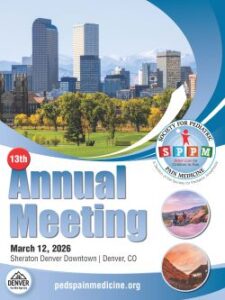
A 3-month-old infant is undergoing pelvic surgery and will be a candidate for regional anesthesia. What important protein is deficient in newborns and infants (as compared to older children and adults) that can contribute to toxicity if amide local anesthetics are used?
Correct!
Wrong!
Question of the Month - August 2022
Correct Answer: B. Alpha-1 antiglobulin
Hypoproteinemia reduces patients’ capacity for protein-binding of local anesthetics and other medications. Local anesthetics primarily bind to albumin (high capacity for binding with low affinity) and α1-acid glycoprotein (low capacity for binding with high affinity). Various local anesthetics exhibit protein binding to different extents, which influences duration of action. For example, lidocaine is approximately 65% protein-bound, whereas ropivacaine is about 95% bound to protein in healthy patients. Since the free fraction (not protein-bound) of the drug contributes to clinical effect as well as toxicity, factors that reduce protein binding have a greater effect on highly protein-bound local anesthetics. Furthermore, metabolism of amide local anesthetics by hepatic cytochrome P450 enzymes are reduced in our youngest patients due to limited hepatic function (and therefore protein production) in the first months of life. To a lesser degree, immature renal development also contributes to poor amide metabolism. Collectively, these physiologic and pharmacologic properties make the risk of toxicity from amide local anesthetics significantly higher in the neonate and infant populations. This makes ester local anesthetic agents the preferred choice for neonates and young infants receiving local anesthetics.
References:
1. Neal JM, Barrington MJ, Fettiplace MR et al. The third american society of regional anesthesia and pain medicine practice advisory on local anesthetic systemic toxicity: Executive summary 2017. Reg Anesth Pain Med 2018;43:113-123.
2. Suresh S, Ecoffey C, Bosenberg A, Lonnqvist PA, de Oliveira GS Jr, de Leon Casasola O, de Andrés J, Ivani G. The European Society of Regional Anaesthesia and Pain Therapy/American Society of Regional Anesthesia and Pain Medicine Recommendations on Local Anesthetics and Adjuvants Dosage in Pediatric Regional Anesthesia. Reg Anesth Pain Med. 2018 Feb;43(2):211-216.
3. Veneziano G, Tobias JD. Chloroprocaine for epidural anesthesia in infants and children. Paediatr Anaesth. 2017 Jun;27(6):581-590. doi: 10.1111/pan.13134. Epub 2017 Mar 21.
Hypoproteinemia reduces patients’ capacity for protein-binding of local anesthetics and other medications. Local anesthetics primarily bind to albumin (high capacity for binding with low affinity) and α1-acid glycoprotein (low capacity for binding with high affinity). Various local anesthetics exhibit protein binding to different extents, which influences duration of action. For example, lidocaine is approximately 65% protein-bound, whereas ropivacaine is about 95% bound to protein in healthy patients. Since the free fraction (not protein-bound) of the drug contributes to clinical effect as well as toxicity, factors that reduce protein binding have a greater effect on highly protein-bound local anesthetics. Furthermore, metabolism of amide local anesthetics by hepatic cytochrome P450 enzymes are reduced in our youngest patients due to limited hepatic function (and therefore protein production) in the first months of life. To a lesser degree, immature renal development also contributes to poor amide metabolism. Collectively, these physiologic and pharmacologic properties make the risk of toxicity from amide local anesthetics significantly higher in the neonate and infant populations. This makes ester local anesthetic agents the preferred choice for neonates and young infants receiving local anesthetics.
References:
1. Neal JM, Barrington MJ, Fettiplace MR et al. The third american society of regional anesthesia and pain medicine practice advisory on local anesthetic systemic toxicity: Executive summary 2017. Reg Anesth Pain Med 2018;43:113-123.
2. Suresh S, Ecoffey C, Bosenberg A, Lonnqvist PA, de Oliveira GS Jr, de Leon Casasola O, de Andrés J, Ivani G. The European Society of Regional Anaesthesia and Pain Therapy/American Society of Regional Anesthesia and Pain Medicine Recommendations on Local Anesthetics and Adjuvants Dosage in Pediatric Regional Anesthesia. Reg Anesth Pain Med. 2018 Feb;43(2):211-216.
3. Veneziano G, Tobias JD. Chloroprocaine for epidural anesthesia in infants and children. Paediatr Anaesth. 2017 Jun;27(6):581-590. doi: 10.1111/pan.13134. Epub 2017 Mar 21.
 SPPM 13th Annual Meeting
SPPM 13th Annual Meeting